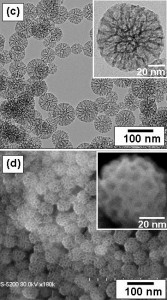What is Cancer (disease)?
Cancer is a very well known disease plaguing human society for the last century. It is characterized by abnormally rapid cell division often accompanied by tumor growth; the type of tumor mainly being malignant to be more precise. It is
known to sprout from sources known as carcinogen (such as ultraviolet radiation and smoking cigarettes) as well as genetic dispositions.
Current Treatment
Current treatments are quite limited and do not have an 100% success rate since there are so many mutations and varieties in cancer. Treatments such as chemotherapy often have lasting side effects. Additionally, there is a likelihood that cancerous cells are not completely eradicated and may resurface in years to come.
The following is the background behind chemotherapy and the effects it has on the human body provided by Dnews on YouTube.
What the Future Holds?
What scientists are trying to obtain is a sustainable as well as safe method of treating cancer. Scientists are looking into stem cell research, protein inhibition (protein Kinase inhibition) and artificial intelligence as potential methods. But, perhaps one of the most promising of the potential treatments is nanotechnology.
*Credit to Inquisitr.com for providing these different potential treatment methods.*
Nanotechnology and Cancer Treatment
Nanoparticles are as small as cell organelles with great flexibility when it
comes to shape, size and composition. Research by scientists have found a mesoporous silicon nano particle that is able to encase azobenzene molecules within its membrane pores as well as carry different sized substrates inside the particle itself. It is important to note the fact that azobenzene switches its orientation/ configuration (cis/trans) when exposed to light and its size changes when going from cis to trans. This means that the permeability of the silica nanoparticle can be regulated by the azobenzene molecular configuration. Small pellets of anti-cancer drugs can be inserted into the silica nanoparticles and injected into the human body. With controlled light exposure and intensity, the size of azobenzene changes releasing the substrate into the cancer cell targeting either just the cancerous components or the entire cell. The following video uploaded by FGRGAnimation made by Frank Gu from the University of Waterloo outlines the process of osmosis and cell substrate concentration in regulating and controlling transport in a nanoparticle.
This process will be safe due to the high control levels in the real (in vivo) environment. We are able to selectively insert the amount of substrate into the nanoparticles to control concentration and light intensity. Thus, the correct dosage is always applied. Interestingly, the treatment process can be both selective or general meaning scientists are able to use substrate specifically targeting cancerous components in a cell or the entire cancer cell.
Although the focus was on nanoparticles and nanotechnology, any of the the aforementioned 4 methods can be an important breakthrough in cancer treatments if proven experimentally successful.
Posted by Ming Lun (Allan) Zhu



2 responses to “Nanotechnology: The Cure for Cancer?”